Today we had another earthquake in this tectonically active region of the world. Initially posted as a magnitude 7.0, the USGS considers this a M = 6.6 earthquake.
Here is a map showing the epicenter as an orange circle. I placed the USGS moment tensor, along with my interpretation of the sense of motion, on the map. I placed a moment tensor / focal mechanism legend in the upper right corner of the map. There is more material from the USGS web sites about moment tensors and focal mechanisms (the beach ball symbols). This entire region is fairly tectonically active, with numerous large magnitude earthquakes in the past two years. I summarize some of these earthquakes below. Both moment tensors and focal mechanisms are solutions to seismologic data that reveal two possible interpretations for fault orientation and sense of motion. One must use other information, like the regional tectonics, to interpret which of the two possibilities is more likely. Based on the orientation of the transform boundaries associated with the Woodlark Basin spreading ridges, I interpret this to be a north striking right lateral earthquake.
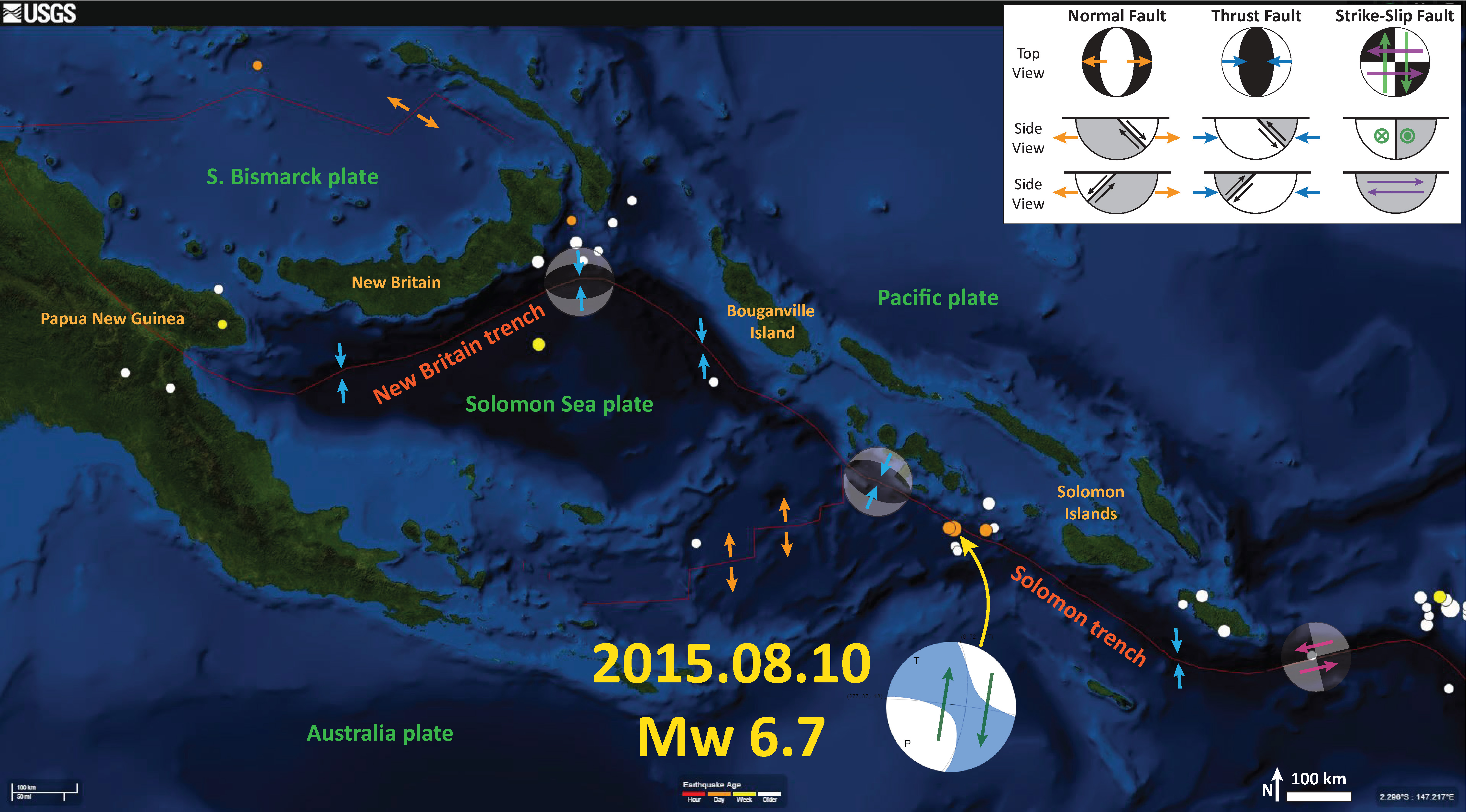
Here is a generalized tectonic map of this region (credit IRIS).
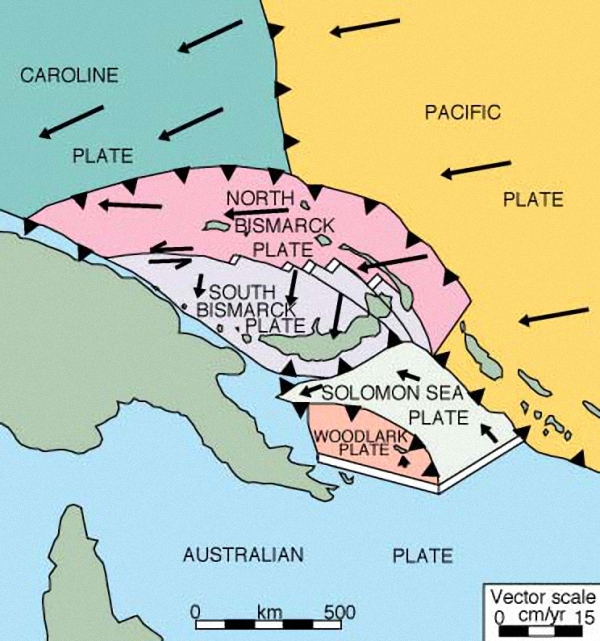
In July 2015, there was an earthquake with a similar moment tensor, in the same region. Here is my post about that earthquake. Here is my map that shows the location of that earthquake.
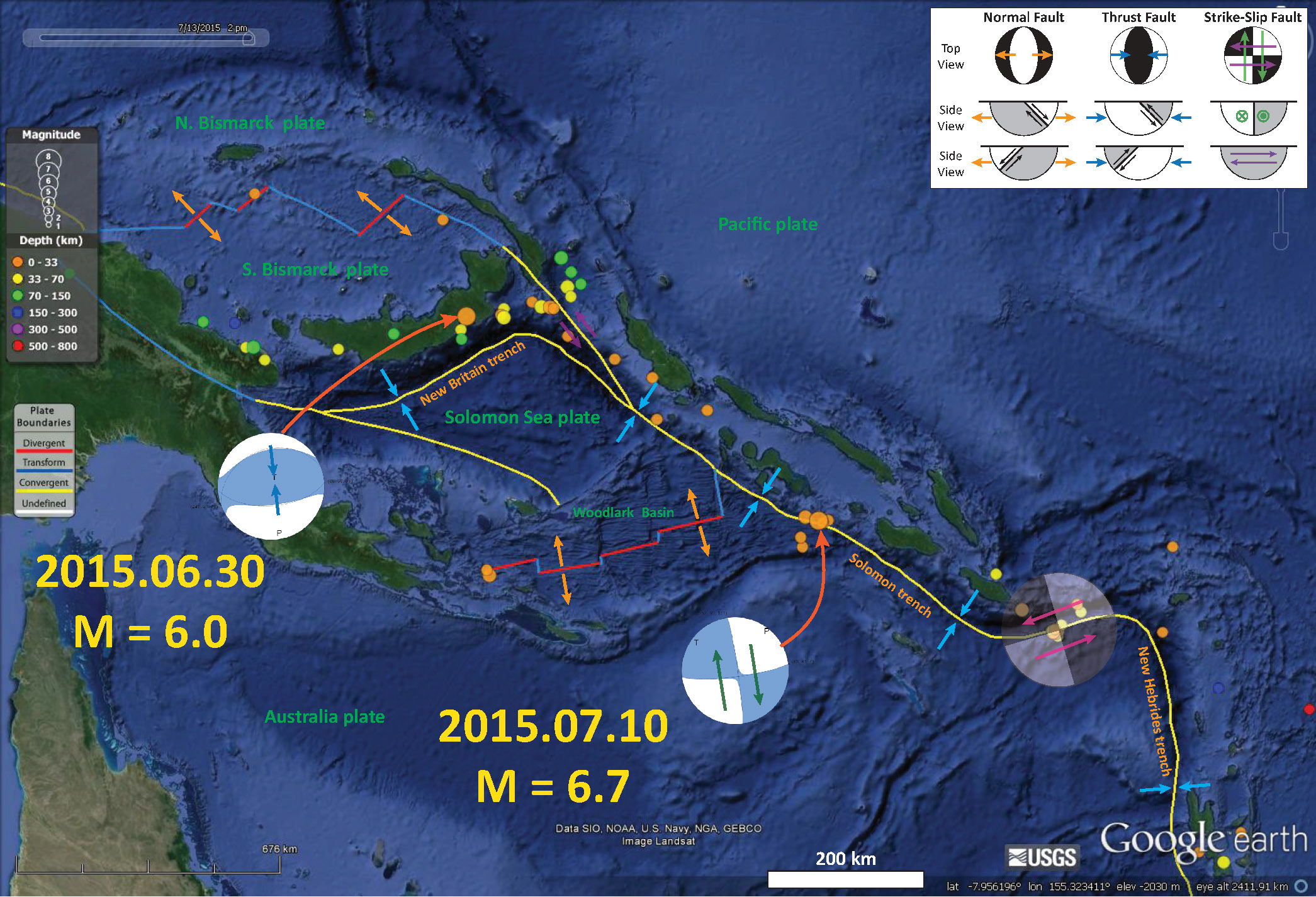
In May of 2015, there was a thrust/reverse fault earthquake to the east of this M 6.6 earthquake. Here is a summary map that I put together with that, along with some other recent earthquakes plotted. The page for the May earthquake is here.
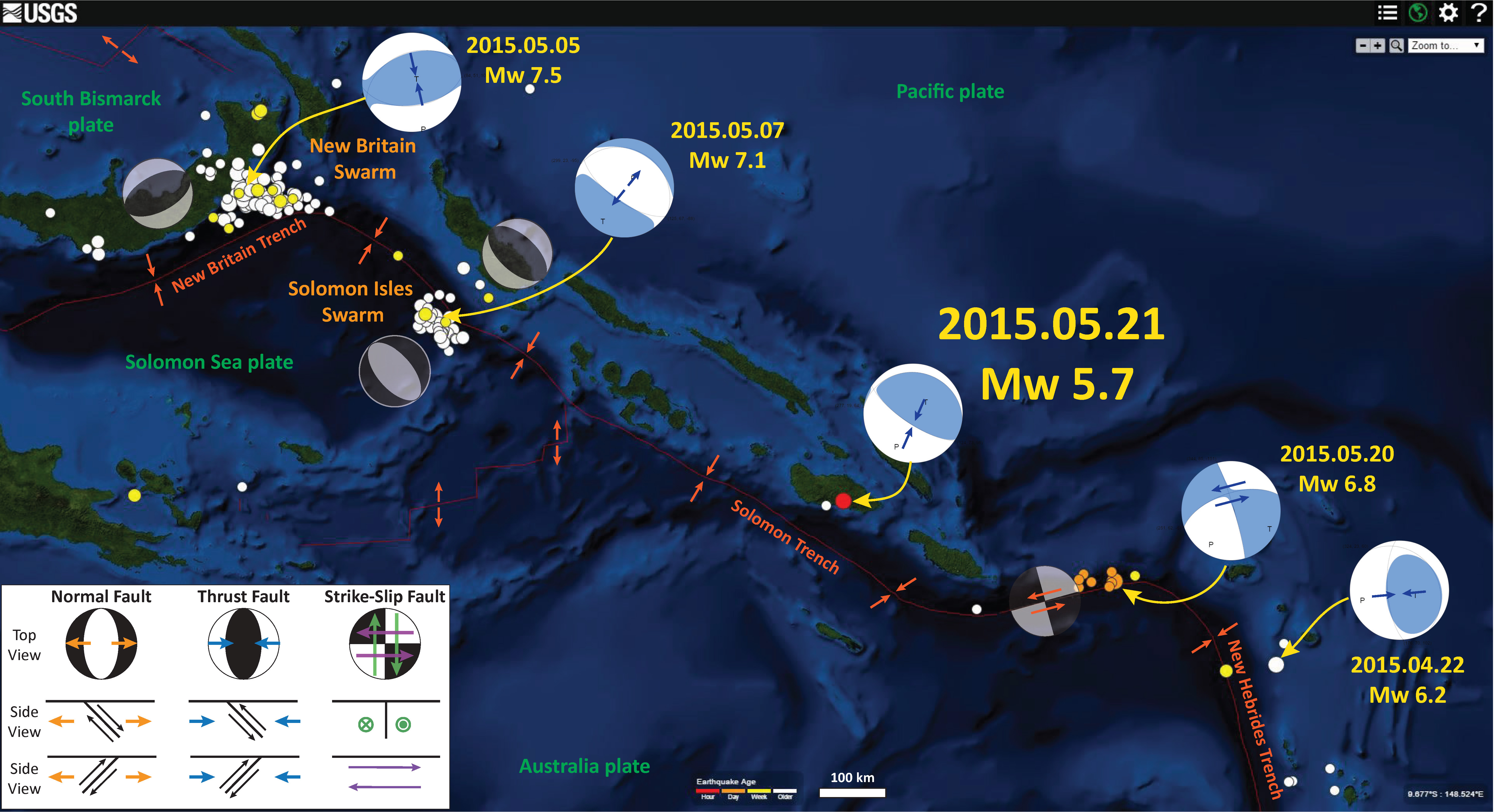
There were also three M = 6.8-6.9 earthquakes further to the south along a transform plate boundary (mapped as a subduction zone by the USGS). Here is a map that shows the location of this May earthquake swarm.
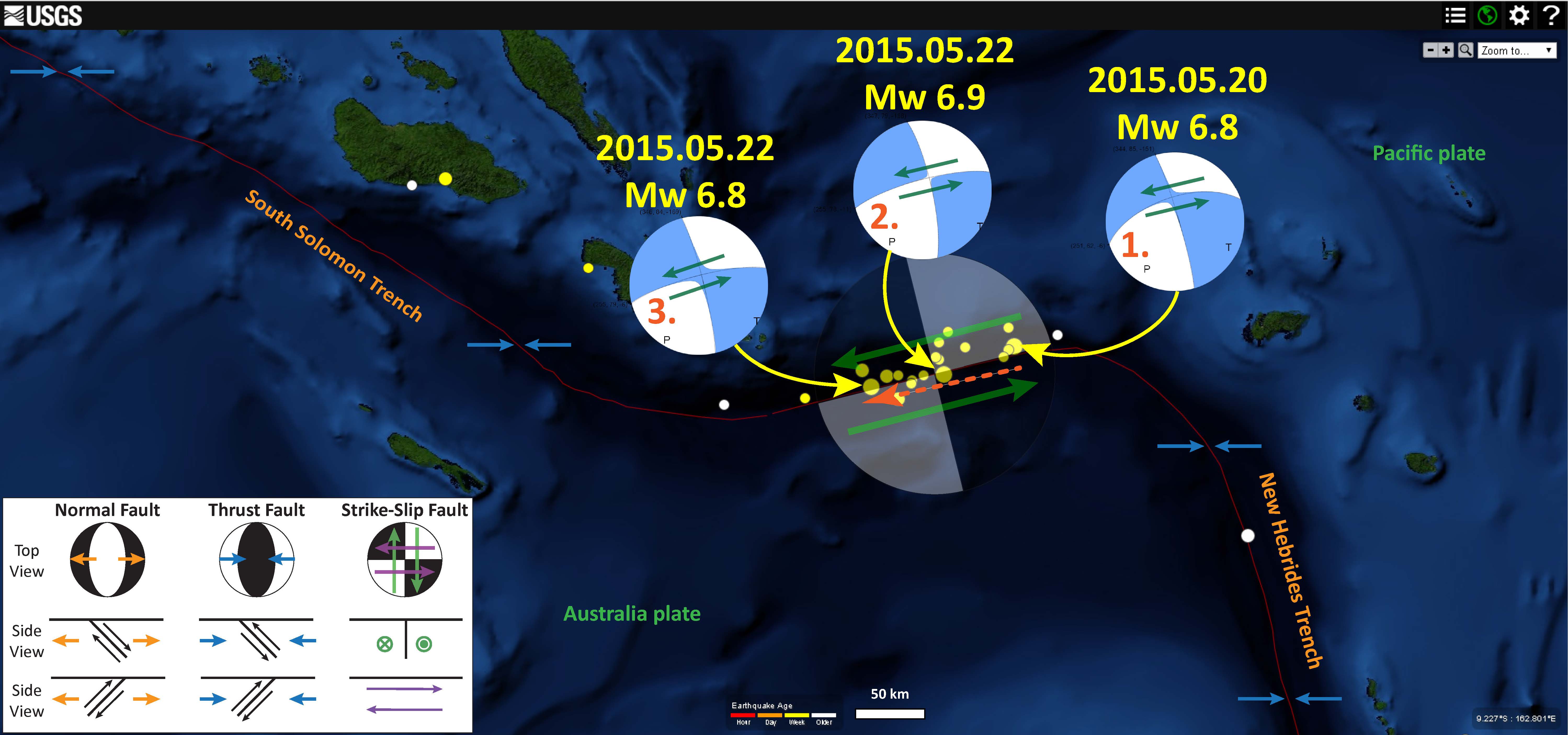
Finally, further to the North, along the New Britain trench, we have had a series of earthquakes since 2000. I plot these in this map and discuss them a little further on this page.
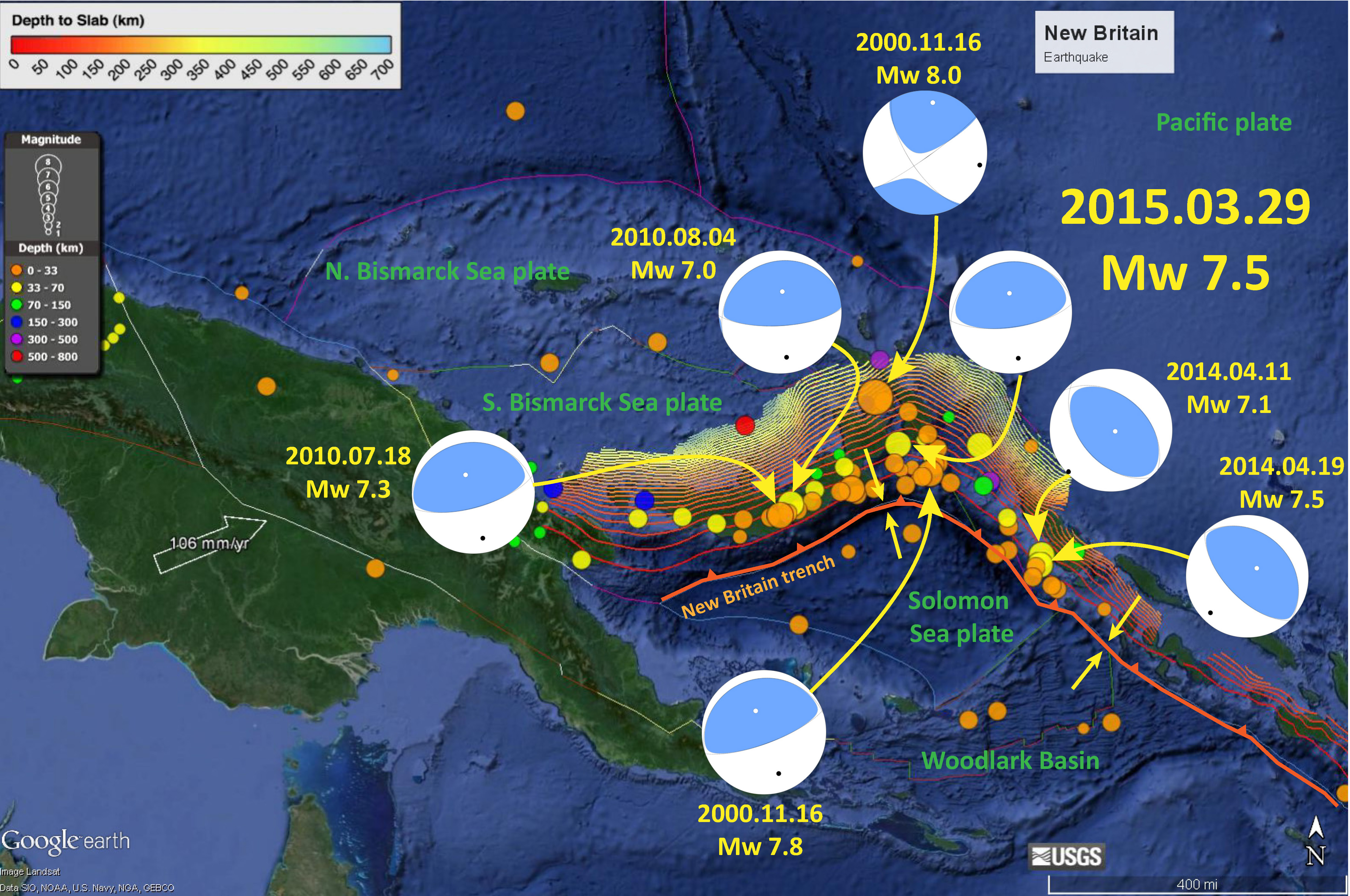
I put together this map to show how the New Britain and Solomon trenches meet. Earthquakes along the New Britain trench have principal stress aligned perpendicular to the New Britain trench and earthquakes along the Solomon trench have principal stresses aligned perpendicular to the Solomon trench due to strain partitioning in the upper plate. I provide more links and explanations about these earthquakes on this page.

Solomon Islands Earthquake!
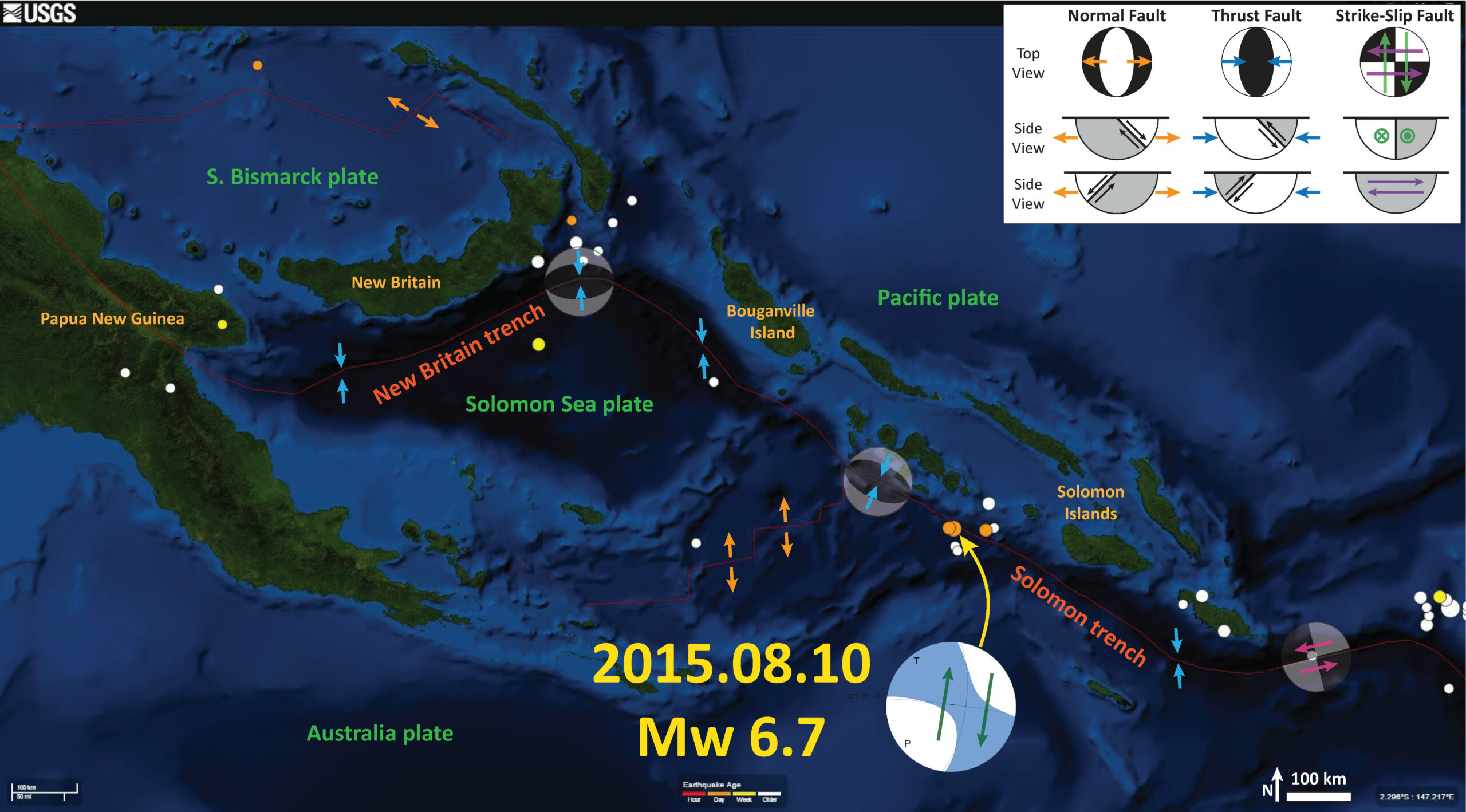
1 thought on “Solomon Islands Earthquake!”